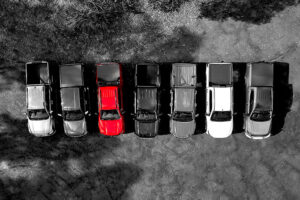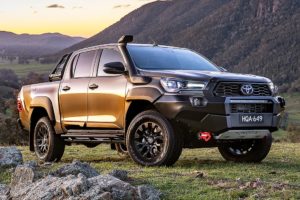VFACTS 2020 year in review
It was a year like no other in living memory. Discover the big sales winners and the brands that struggled as new car sales swung wildly in 2020, as measured by FCAI VFACTS.
In a year that threatened to produce no winners with COVID-19 slamming into consumer confidence and, by extension, car industry sales early in 2020, a turnaround did come in the final three months of the year and altered the landscape dramatically.
Only a handful of brands weathered the storm throughout the year as the market dived 17.9 per cent in March according to VFACTS, plunged a massive 48.5 per cent in April as lockdowns and other social restrictions took hold, and remained in serious trouble for another five months.
That was plain for all to see by a string of double-digit negative results that kept the industry down by more than 20 per cent to the end of September.
But come December VFACTS results, and now into the first stanza of 2021, there are a number of other brands, models and segments that stand out as winners in 2020 as the market’s year-on-year sales deficit eased to 13.7 per cent and as an air of optimism rushes through in parallel with the improving health of the nation.
VFACTS 2020 winners
You know what they say about ‘when the going gets tough’ – yes, the tough get going, and that aptly reflects the position of Toyota in Australia.
The number-one brand in Australia for the past 18 years straight, Toyota finished the year just 0.5 per cent in arrears after posting huge totals in the past few months as buyers coming out of lockdown and into the holiday season went straight into dealerships to buy a new vehicle.
About one in every five new vehicles sold throughout the final quarter was a Toyota. Most were a HiLux – the top-selling vehicle in Australia bar none for the past five years – or a RAV4 (the top-selling SUV), Corolla (top passenger car) or LandCruiser (top 4×4 off-road wagon), and many of them hybrids.
Indeed, Toyota’s record 54,335 hybrid vehicle sales last year marked a 95.1 per cent increase over 2019 – not to mention 85 per cent of all electrified vehicles sold in Australia – and saw total industry hybrid sales rise 93.7 per cent to 60,417 units.
Full-electric vehicle sales in Australia, while still only representing a fraction of the overall market, are also moving in the right direction, totalling 1769 units in 2020 (+16.2%), not including Tesla which does not report its figures. The increasing number of plug-in hybrid electric vehicle (PHEV) sales is also noted, with 1685 new registrations last year (+18.2%).
As buyers bunkered down when the pandemic was at its peak, Chinese brands MG, LDV, Great Wall and Haval bucked the trend – as they have done since well before COVID hit – and took total Chinese-sourced vehicle sales to 30,696 in 2020, up 70.9 per cent compared to 2019.
MG led the way with 15,253 sales (+83.2%) as the MG3 stood tall as Australia’s number-one light car and as new turbo and full-electric versions of the MG ZS SUV arrived. LDV recorded 9323 sales (+43.9%), and Great Wall (1941) and its sister brand Haval (3294) found substantial growth of 38.5 and 93.1 per cent respectively.
Among the leading mass-market brands, beyond Toyota there were some winning performances as a handful of top 10 players recorded significant monthly sales improvements in the final quarter.
For a couple, this kept their year-on-year decline to single digits – not a bad result, all things considered.
These are Ford (59,601, -5.8%), whose Australian-developed Ranger was again the top-selling 4×4 ute in the nation (37,889, +2.4%), and Kia, which almost overtook Mitsubishi last year to claim a top-five position but still found plenty of form, finishing with 56,076 sales (-8.8%).
The leading prestige brands also recovered strongly in the last quarter, and while Mercedes-Benz Cars (29,455, -7.9%) remained the clear luxury market leader – and pipped Honda to snare a top 10 position in the total market – over the full year it did lose ground to a resurgent BMW (23,520, +0.9%) and Audi (15,868, +1.0%).
Volvo also continued to trade well (7700, -1.0%) and fledgeling Korean luxury brand Genesis (229, +122.3%) found growth as new models arrived, albeit from a low base.
Mercedes-Benz Vans (6778, +1.2%) was in positive territory, while the Ateco Group’s locally-converted RAM pick-up truck venture continued on its merry way, racking up 3320 sales last year which marked a 15.8 per cent increase.
On this front, new-generation utes introduced last year typically brought an immediate surge in sales for the brands concerned.
Special mention here of the Isuzu D-MAX, which handed Isuzu Ute a top 10 placing overall in November, still with only two models (D-MAX, MU-X) in its stable.
The arrival of the all-new Jeep Gladiator, together with a ‘mea culpa’ marketing campaign that acknowledged the brand’s past issues in areas such as customer service, also saw Jeep (5748, +4.1%) improve last year as it looks to turn around its fortunes in Australia.
In the rarefied exotic and super-luxury car market, which is a useful indicator of economic prosperity and confidence among consumers at the top end of town, a variety of brands coped well early on in the year but struggled as the global pandemic wore on.
Porsche was perhaps the stand-out, its 4243 sales representing growth of 2.0 per cent.
VFACTS 2020 losers
As well as being the year that COVID came, 2020 was the year that Holden left.
For the record, the lion brand, which is no longer trading in Australia, is attributed as having sold 16,688 vehicles last year (-61.3%) after nine successive annual declines and a sad and bitter exit. Need we say more?
The final remnants of Infiniti (197, -65.5%) also disappeared last year after the Nissan-owned premium brand announced in September 2019 that it was leaving our shores.
Just as Holden’s exit proved, and will be emulated by other brands in the years ahead, Infiniti’s departure reflects the fact that Australia plays only a small part in a highly competitive global marketplace that is forcing car-makers to concentrate on countries where there are decent sales and profits to be made – and these are increasingly only left-hand drive.
The performance of other car-makers should be weighed against the debilitating effects of coronavirus pandemic, but even as the market recovered, some big-name brands suffered declines that were much deeper than the industry average (-13.7%).
Those with downturns of more than 20 per cent included Hyundai (64,807, -24.7%), Mitsubishi (58,335, -29.9%), Nissan (38,323, -24.2%), Volkswagen (39,266, -21.4%), Subaru (31,501, -21.3%) and Honda (29,040, -33.8%).
Among the volume prestige brands, Jaguar (1326, -41.7%) and Land Rover (6339, -28.6%) bore the brunt of the weaker market.
Last year also saw the continuing decline of the traditional passenger car segment, which fell 29.7 per cent and found its ever-diminishing share of the market at a new record low of just 24.2 per cent – down from 29.7 last year.
SUVs, by contrast, accounted for 49.6 per cent of all new-vehicle sales in Australia last year as the segment’s sales decline was restricted to just 5.9 per cent.
Light, small and upper-large SUVs all returned positive results, and mid-size SUVs was the biggest segment across the entire market with 179,722 sales recorded in the ledger.
Pick-ups were extremely close behind, with combined 4×2 and 4×4 ute sales of 179,392 units.
VFACTS 2020 monthly summaries
Click below to refresh on the sales results of each month of 2020:
January | February | March | April | May | June | July| August | September | October | November | December
Further reading
What’s Tomorrow got to do with it?
Why on earth are new car enquiries up 95% year on year?
Consumers continue to build carsales Editorial audience




